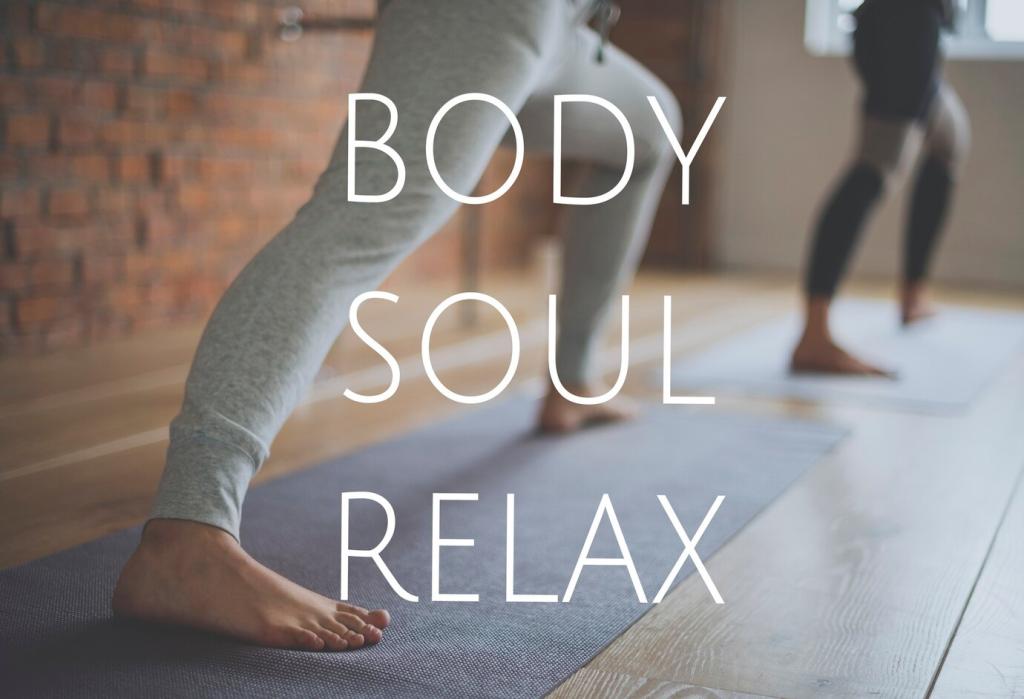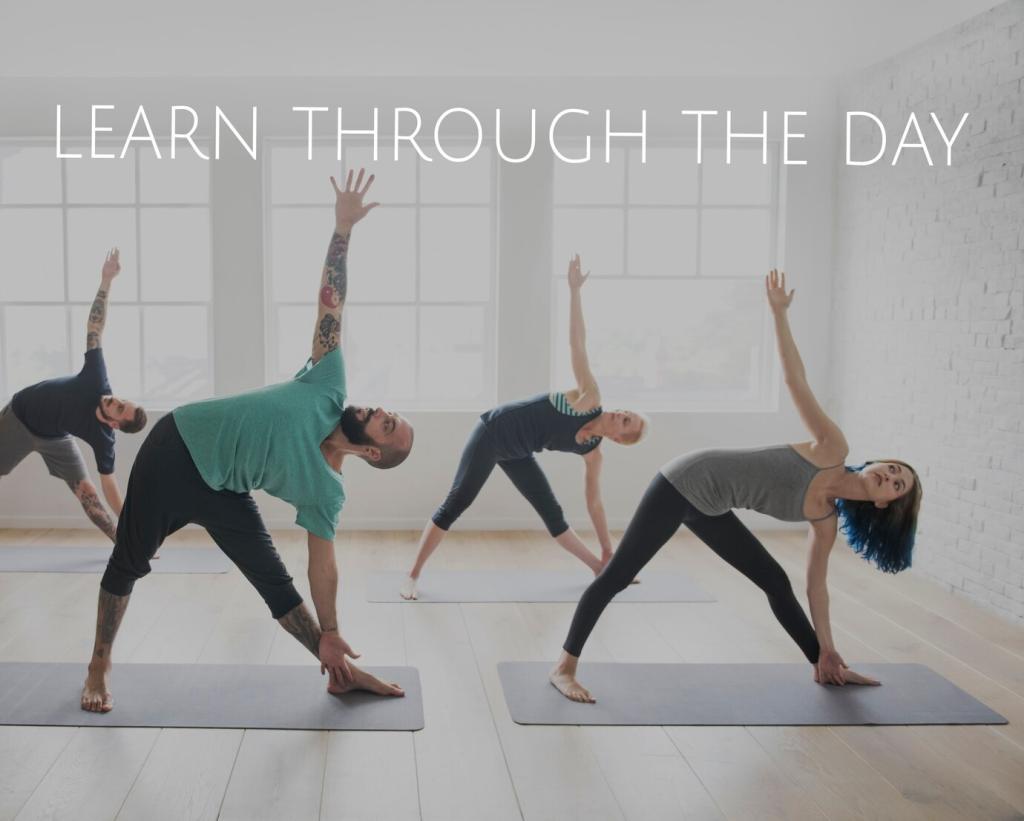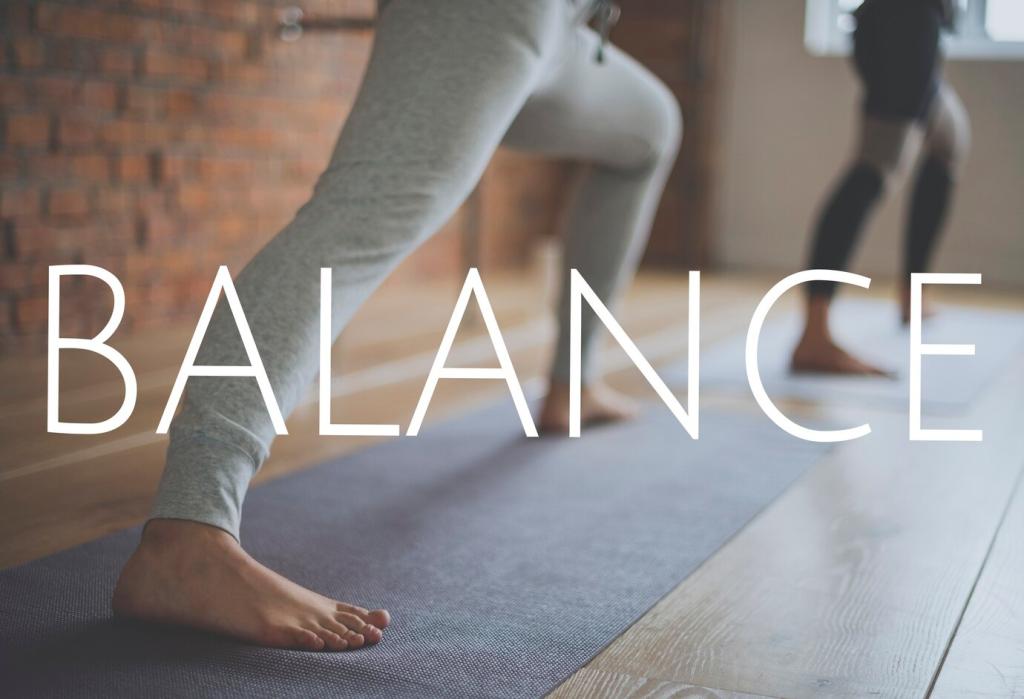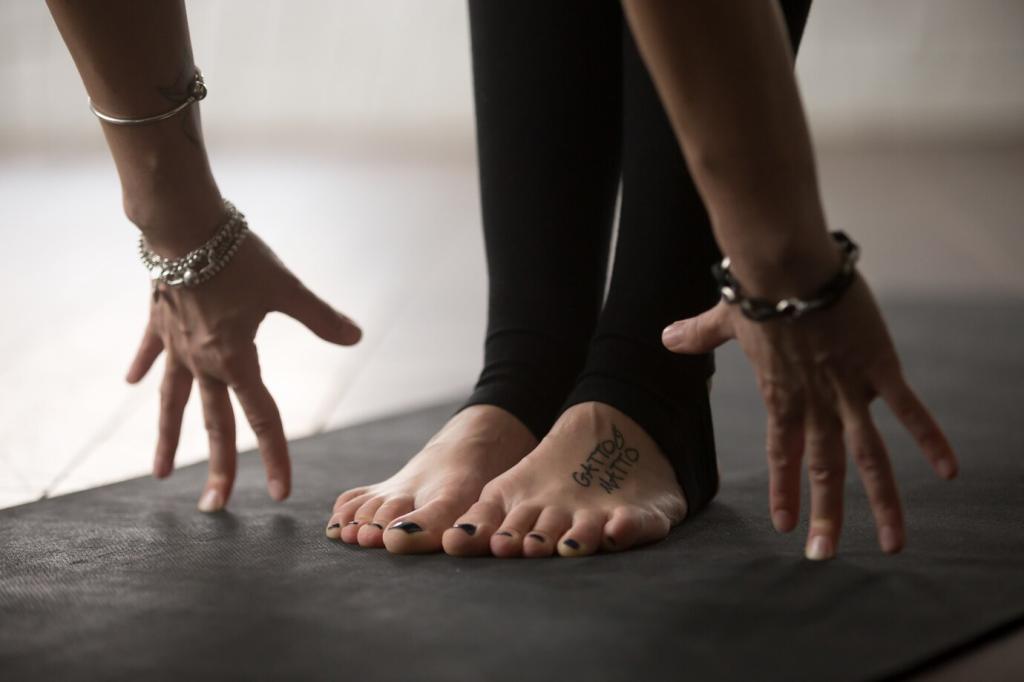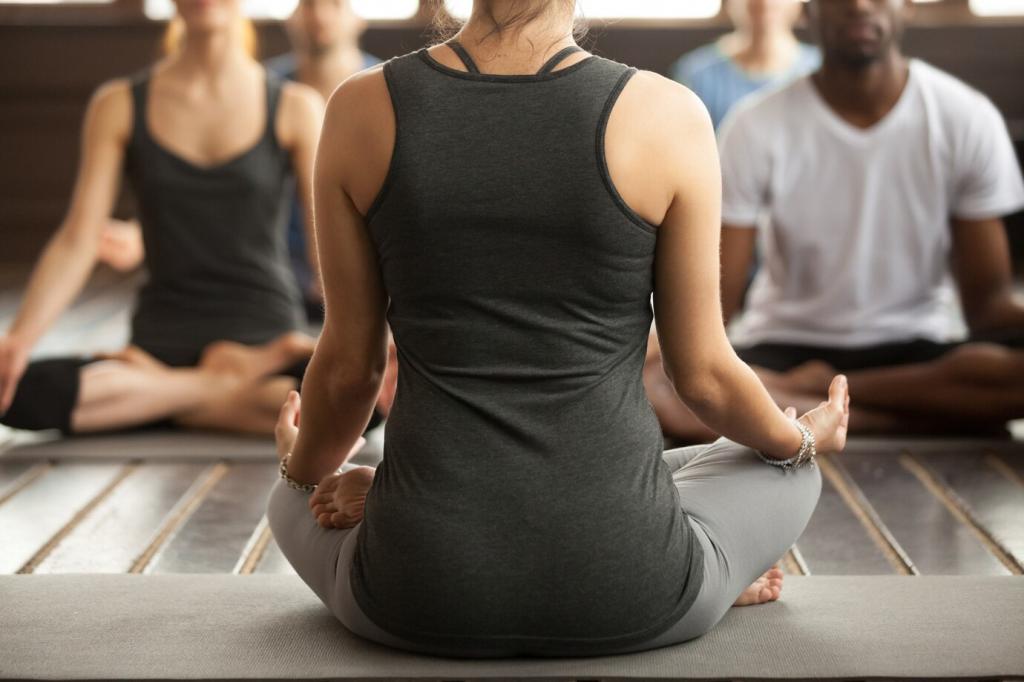Core and Spine: Support Every Step
On hands and knees, inhale to arch and widen your collarbones, exhale to round and broaden your back. Move slowly, segment by segment, aligning breath with motion. This lubricates spinal joints, countering backpack stiffness. Two minutes before and after a hike can change everything. Which variation feels best for your morning start?
Core and Spine: Support Every Step
From tabletop, extend the right leg back and the left arm forward, keeping hips level. Imagine balancing a cup of tea on your low back. Breathe for five counts, then switch. This builds cross-body strength that steadies you when a rock shifts. Encourage a friend to try it and compare how your descents feel.
Core and Spine: Support Every Step
Lower your knees from a forearm plank, align shoulders over elbows, and draw your belly gently toward your spine. Keep a long neck and steady breath. Thirty-second holds cultivate resilience without overtaxing. Increase gradually across weeks. Share your personal Plank playlist, and we’ll feature community favorites in our next trail-ready flow.
Core and Spine: Support Every Step
Lorem ipsum dolor sit amet, consectetur adipiscing elit. Ut elit tellus, luctus nec ullamcorper mattis, pulvinar dapibus leo.

